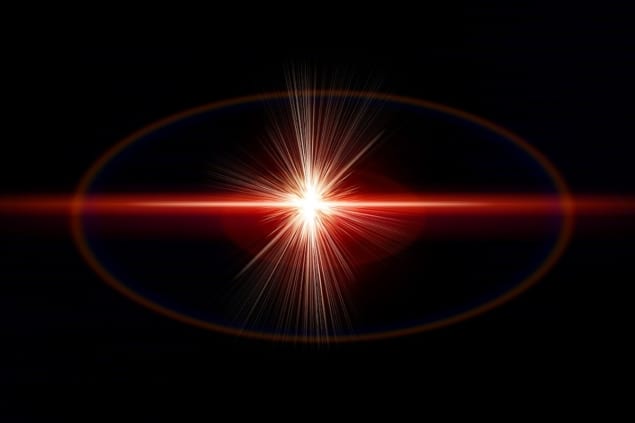Holographic plasma lenses could focus ultrahigh-intensity lasers
07 Mar 2022

Two new methods for generating holographic plasma lenses capable of focusing ultrahigh-intensity lasers have been proposed by researchers in the US. Using computer simulations, a team led by Matthew Edwards at Lawrence Livermore National Laboratory (LLNL) worked out how the robust structures could be created by imprinting carefully generated interference patterns onto a plasma medium.
The latest advances in laser technology have allowed physicists to generate light pulses as powerful as 1015 W. However, these intense lasers are difficult to use in experiments because they cause irreparable damage to conventional solid-state optics.
A potential solution to this issue lies with plasma, an ionized state of matter that has a damage threshold several orders of magnitude higher than solid materials. Plasma has been used to generate optical components including amplifiers, gratings and mirrors – but so far, these structures have only been used to focus beams as powerful as around 1012 W.
Imprinting interference
As an alternative approach, Edwards’ team suggests the possibility of using holographic plasma lenses, which focus beams using diffraction. Typically, holograms work by imprinting the interference between a 3D light field and an initial reference beam, within a light-sensitive medium like a photographic plate. Afterwards, a second reference beam is diffracted by the imprinted pattern to reproduce the initial light field.
As well as interference patterns, holograms can also be imprinted as phase shifts, caused by the varying speed of light as it passes through media with varying densities. Drawing from this principle, Edwards and colleagues showed how a hologram could be used to modulate plasma density, producing a robust diffractive lens.
In their proposed set-up, two pump lasers are aimed along the same path, and positioned so that their foci overlap. This generates an interference pattern that spreads out from the point of overlap in a series of progressively larger rings, alternating between high and low light intensity.
Two techniques
Through computer simulations, the researchers showed how a lens could be generated through two possible techniques involving this set-up. In the first technique, the lasers are fired into a jet of gas. The resulting interference pattern ionizes the gas, creating a bull’s-eye pattern of alternating rings of plasma and unionized gas. In the second technique, the two lasers are instead aimed into and existing plasma. This time, the laser interference alters the distribution of plasma ions – again creating alternating rings of high and low density.READ MORE

Both mechanisms created a holographic imprint of a 3D phase-shifting structure – which remained in place when the pump lasers were turned off. Through simulations, Edwards and team showed that the diffraction patterns generated by the first type of lens could be used to focus petawatt lasers, with intensities on the order of 1015 W/cm2. The second method proved even more effective, and was able to handle pulses as intense as 1018 W/cm2.
The team now hopes to carry out experiments to confirm the predictions. If achieved, this could open up new opportunities for experiments involving the ultra-intense lasers generated at LLNL, as well as a growing number of other facilities worldwide.
The research is described in Physical Review Letters.
Sam Jarman is a science writer based in the UK.
from physicsworld.com 24/4/2022
Δεν υπάρχουν σχόλια:
Δημοσίευση σχολίου